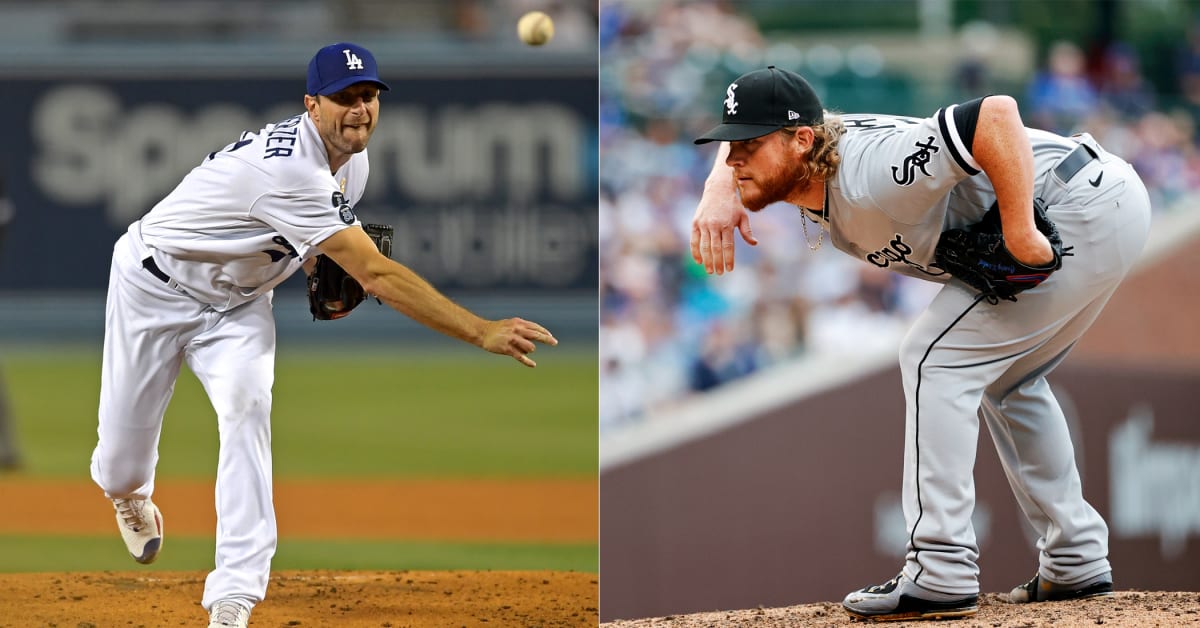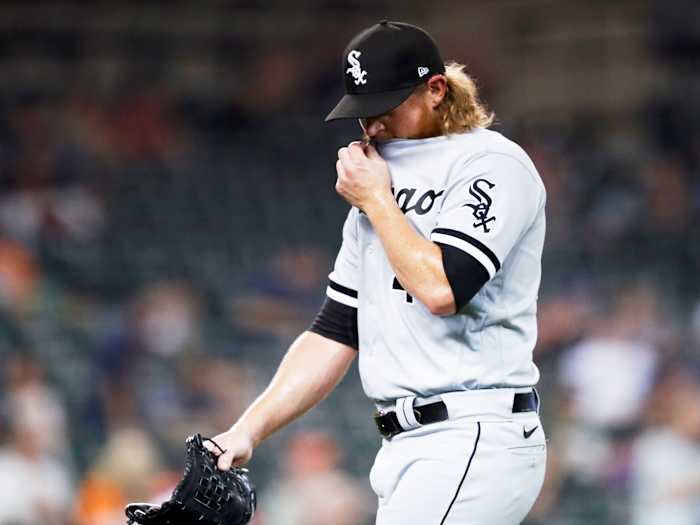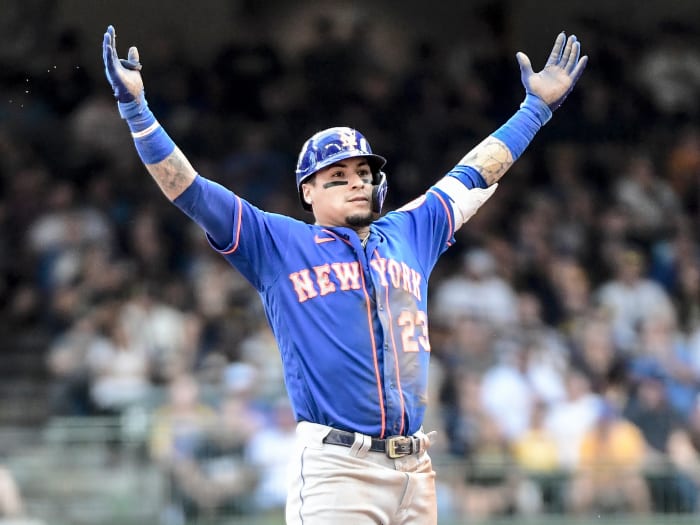
2021 Trade Deadline Review: Which Moves Made a Difference?
Welcome to The Opener, where every weekday morning you’ll get a fresh, topical column to start your day from one of SI.com’s MLB writers.
Practically every baseball fan loves to read about the fallout of the July trade deadline, and wants to know which teams “won” and “lost” each deal. As a result, virtually every baseball publication covers the trade deadline with feverish dedication, and tries to immediately ascertain who made out best. Of course, there’s very little evidence to go off of. Sure, maybe we can evaluate each organization’s general strategy and the sticker price each team paid for its shiny new toys. But as far as which toys will actually function as advertised? There’s no way to tell until we’ve completed the rest of our journey through the regular season.
Well, we’re almost there. Of course, there is plenty to be decided in these final few days—and it’s far too early to tell if the prospects traded will pan out or not— but we have enough data to declare which trades have worked out reasonably well for July’s buyers. The season is roughly 96% in the books. Starting pitchers have only one more turn through the rotation before the playoffs begin, and hitters’ slash lines won’t be changing too much between now and Sunday.
So before we get caught up in the rush of the regular season’s final weekend, let’s review five acquisitions that worked out well for the teams who fancied themselves as contenders a couple of months ago—and five that didn’t.
All stats are updated through Tuesday night.
Satisfied Shoppers
Dodgers SP Max Scherzer, SS/2B Trea Turner
Post-deadline bWAR: 5.2 (Scherzer: 3.1, Turner: 2.1)
In the moment, this felt like one of the most impactful midseason trade acquisitions in MLB history, right up there with Milwaukee’s trade for C.C. Sabathia in 2008. It has lived up to the hype. Scherzer hasn’t been quite as valuable as '08 Sabathia, who hurled seven complete games and recorded a 1.65 ERA in 17 starts after being acquired right before the All-Star break, a feat worth 4.9 bWAR for the Brewers. But if you combine Scherzer and Turner’s bWAR totals, they’ve been worth a smidge more than Sabathia’s workhorse heroics, which seem even more Herculean today.
Scherzer has been the best pitcher in baseball since relocating to Chavez Ravine. He leads all qualified pitchers in ERA (1.43), FIP (1.56), K% (35.7), BB% (3.4), WHIP (0.71) and fWAR (3.0) since July 31. That is preposterous. He’s accumulated as much bWAR in 10 starts with Los Angeles as he did in 19 starts with Washington. Turner, meanwhile, has been an excellent catalyst for Los Angeles while marginally improving all three areas of his slash line and adjusting to a new position at second base.
This trade will ultimately be judged on how far the Dodgers advance in the postseason (both this year and next, when at least Turner will still be around). But these two former Nationals have done all they can to help their new team leapfrog the Giants in the NL West, though as things stand, San Francisco still holds the lead.
Giants 3B/OF Kris Bryant
Post-deadline bWAR: 1.1
One of the reasons the Dodgers haven't been able to overcome their division rivals is Farhan Zaidi’s counter strike to bring Bryant aboard following the L.A. blockbuster. Bryant hasn’t lit the Bay Area on fire or anything. In fact, he’s actually hit slightly below his career norms and has just one home run in September. But for a team that needed to overcome the losses of Evan Longoria and, as of this week, Brandon Belt at the corners, in addition to a weak spot in left field, he’s proven to be a good fit.
The 2016 NL MVP has logged an .805 OPS for the Giants while just about splitting his time evenly between third base and the outfield, where he’s played all three positions, albeit occasionally struggling with the abnormal dimensions of AT&T Park. With the NL West race seemingly coming down to the bitter end, though, every little contribution counts, and Bryant has certainly been a net positive.
Yankees RP Clay Holmes
Post-deadline bWAR: 1.1
Who would have guessed that Holmes would be New York’s most valuable deadline addition? It’s true. His bWAR is the equivalent of Anthony Rizzo’s and Joey Gallo’s combined, though news of his acquisition generated a fraction of the headlines.
Ever since debuting in 2018, the 28-year-old had battled control issues in Pittsburgh. His pre-deadline walk rate of 5.4 BB/9 IP this year was actually the best mark of his career. But the Yankees recognized Holmes’s league-high ground ball rate of 72.4% (at the time of the trade) could be an asset in Yankee Stadium. They also seemingly taught him how to harness his control.
After walking 25 batters in 42 innings for the Pirates in 2021, he’d issued just one free pass against 30 strikeouts in 24 innings with the Yankees entering Tuesday (Holmes walked two Blue Jays on Tuesday night, but still worked a scoreless frame). As a result, he’s nearly halved his WHIP to 0.80 to prop up a 1.44 ERA and provided yet another damning indictment of Pittsburgh’s player development system.
Cardinals SPs J.A. Happ, Jon Lester
Post-deadline bWAR: 0.5 (Happ: 0.4, Lester: 0.1)
I’m not afraid to admit I had no idea what the Cardinals were thinking when they decided to acquire two of the oldest, slowest-throwing starters in the league. With both Happ, 38, and Lester, 37, carrying ERAs above 5.00, it seemed like too little, too late for a team that entered deadline day 9.5 games back in the NL Central and seven games behind the Padres for the second wild-card spot. The sabermetrics still aren’t willing to attribute these gray-bearded lefties with too much of the credit for the Cardinals’ record-setting win streak.
It’s hard to argue with the results, though. Happ’s ERA has dropped nearly three runs to 3.97 in 10 starts for the Redbirds, and it would be more than a half-run lower if not for his one-inning, seven-run clunker vs. Cincinnati on Sept. 1. Lester's ERA has shrunk nearly a full run to 4.13 in 11 starts. It’s worth noting their FIPs have been nearly identical to what they were with their previous 2021 clubs, reflecting both owe a lot of credit to the collection of Gold Glove-caliber defenders behind them in St. Louis. Still, kudos to the front office for recognizing these two soft-tossing southpaws could provide some much needed cover for an injury-plagued pitching staff by just throwing to contact and letting MLB’s best defense rack up outs behind them.
Braves OFs Adam Duvall, Jorge Soler, Eddie Rosario, Joc Pederson
Post-deadline bWAR: 2.7 (Duvall: 1.3, Soler: 0.6, Rosario: 0.5, Pederson: 0.3)
The Braves reconstructed their outfield in the span of a few hours on July 30, trading for Soler, Duvall and Rosario to complete an overhaul that began with the acquisition of Pederson a few weeks prior. It was simultaneously dramatic, unprecedented and essential after the Braves relied on the likes of Abraham Almonte, Ehire Adrianza and Guillermo Heredia in the wake of Ronald Acuña Jr.’s season-ending ACL tear.
Duvall leads the NL with 111 RBIs, which is all the more remarkable he started the year playing for the offensively challenged Marlins. The 33-year-old has launched a career-high 38 home runs, second in the NL behind only Fernando Tatis Jr., and he also grades out as a plus defender in both left and center field.
This July was the second time the Braves traded for Duvall at the deadline, with the previous time coming in a 2018 deal with the Reds. He struggled down the stretch that season, but was a productive bat for Atlanta in '19 and '20. His presence was missed in last year’s NLCS after he sustained an oblique injury in the opening game, and the front office’s subsequent decision to non-tender him took many by surprise. Less than a year later, he’s back with the Braves as their most valuable outfielder left standing.
Soler recently took over Acuña’s spot at the top of the Braves lineup after already inheriting his title as Atlanta’s starting right fielder, making him an obvious X-factor. The 29-year-old’s .848 OPS would rank as his second-best mark in a full season, behind only the 2019 campaign in which he led the AL and set a Royals franchise record with 48 home runs. Just in the last few days, he’s launched a game-tying three-run home run in Saturday’s comeback win over San Diego and drove in Atlanta’s only two runs in Tuesday’s crucial 2–1 victory over second-place Philadelphia.
Rosario hit for the cycle (on a record five pitches!) earlier this month and has six home runs in 27 games with Atlanta after hitting just seven in 78 games with Cleveland before the deadline. His .910 OPS with his new team would rank as the best of his career by a wide margin.
Pederson’s acquisition before the All-Star break started it all, signaling the Braves weren't ready to throw in the towel after Acuña’s injury. He’s been a roughly league-average bat (95 OPS+) while drawing plaudits from teammates for loosening up the clubhouse at a time it was sorely needed after their MVP was lost for the season. Thanks in large part to the contributions of the four-headed amalgam Anthopoulos assembled to make up for the losses of Acuña and Marcell Ozuna, the Braves are primed to win their fourth straight division title.
Buyer's Remorse
White Sox RP Craig Kimbrel, IF Cesar Hernandez
Post-deadline WAR: -0.8 (Kimbrel: -0.1, Hernandez: -0.7)
Before the deadline, Kimbrel was pitching like he did when he was the most dominant reliever of the 2010s. The 33-year-old was charged with just two earned runs and allowed a lone home run in 36 2/3 innings with the Cubs to rack up 2.5 bWAR—a ridiculous amount for a reliever.
Alas, on the South Side, whether it’s been the move to the eighth inning, mechanics issues or poor luck, Kimbrel has looked more like the guy who flailed on the North Side in 2019 and 2020. He’s allowed five homers, 10 walks and 13 runs in 22 innings with the White Sox while giving up hits at more than double the rate he did for the Cubs.
The White Sox acquired Hernandez as the de facto replacement for the injured Nick Madrigal, whom they then traded for Kimbrel. It has not worked out as planned. With an anemic .225/.301/.294 slash line and just six extra-base hits in 205 plate appearances, he’s been the fifth-worst hitter (66 wRC+) among 154 qualified players. (Side note: Hernandez, amazingly, is still Cleveland’s third-best position player by fWAR, despite his not having suited up for the soon-to-be Guardians in nearly two months.) The 2020 Gold Glover has also been a liability in the field, accounting for -10 defensive runs saved on the year, half of which came in Chicago.
The good news is Kimbrel’s strikeout rate is still elite, and the White Sox had basically already wrapped up the AL Central by the time these guys joined the clubhouse. The bad news is that both of them haven't played well and will be relied upon in the postseason. Still, if Kimbrel can hold down the fort for a Sox squad that makes a playoff run, GM Rick Hahn will consider the 2021 deadline a success.
Blue Jays RPs Brad Hand, Joakim Soria
Post-deadline WAR: -0.9 (Hand: -0.6, Soria: -0.3)
Toronto’s attempted deadline upgrading of its middling bullpen may end up being the deciding factor if the Blue Jays end up missing the playoffs.
Hand’s short stay north of the border was a disaster from the start. In his debut, he took the loss after allowing three runs in the 10th inning (Hand surely isn’t a fan of the Manfred man-on-second rule). He appeared in 11 games for Toronto and was tagged with two losses—including a blown save against his old team in Washington—allowing 10 runs (seven earned) in 8 2/3 innings with three homers and just five strikeouts before his release on Aug. 31. Toronto’s current wild-card deficit? One game, or less than a bad Hand away. Bet they wish they’d kept Hand at arm’s length.
Soria has been fortunate enough to be bailed out by Toronto’s offense after several bad outings, but he hasn’t been much better than Hand since he was acquired from Arizona, allowing seven earned runs on four walks and two homers in eight innings.
Watch MLB games online all season long with fuboTV: Start with a 7-day free trial!
Phillies SP Kyle Gibson, RP Ian Kennedy
Post-deadline WAR: 0.7 (Gibson: 0.6, Kennedy: 0.1)
The soft-tossing Gibson, a first-time All-Star this season, was pinned by many as a second-half regression candidate due to his low strikeout rate, career-low BABIP in the first half and general mediocrity throughout his career. In fact, the bottom had already started to fall out during his final three starts in Texas. But the Phillies had to do something about its beleaguered pitching staff with the NL East up for grabs, and they didn’t have the prospects to jump in on the Scherzer sweepstakes. So, president of baseball operations Dave Dombrowski proceeded to execute a half-measure and acquire a couple of pitchers with limited ceilings.
The doubters have been proven right, as Gibson has predictably seen a downturn while adjusting from playing in front of a strong infield defense in an extremely pitcher-friendly park to perhaps the league’s worst infield defense in one of it’s most hitter-friendly parks. His 4.87 ERA in 11 games is exactly two runs higher than his output with the Rangers.
Kennedy has essentially been a replacement-level player despite managing to keep a tenuous hold on the closer’s role for manager Joe Girardi. His home run and walk rates have both nearly doubled since joining the Phillies, resulting in a ghastly 6.52 FIP. He’s a 36-year-old who throws his mediocre fastball (for a closer) more than 80% of the time. Even if Philadelphia does swipe the division title from Atlanta in the season’s final week, Phillies fans will probably not be feeling confident about either of the team’s deadline acquisitions in October.
Mets IF Javier Báez
Post-deadline WAR: 2.0
This is not about how Báez has played with the Mets. In fact, he's actually compiled more bWAR than any deadline acquisition aside from Scherzer and Turner, and his .929 OPS with New York would count as his career-best mark over a full season.
But considering how the second half of the 2021 campaign played out for the Mets—including Báez's role in the thumbs-down debacle—this will not be looked back on as a successful deal. There's still a chance the Big Money Mets re-sign Báez after the season; after he antagonized the fans with his thumbs, his exciting style of play (and brilliant performance) endeared him to many of the Mets faithful who booed him (and whom he was booing). His friendship with shortstop Francisco Lindor also helps their attempts to bring Báez back, but it's never been a guarantee that he'll return. Instead, if he departs in free agency, the trade will be viewed as one of many mistakes made by an overmatched front office. And if prospect Pete Crow-Armstrong ends up starring for the Cubs down the road, it’ll be regarded as a disaster.
Padres IF Adam Frazier
Post-deadline WAR: 1.0
San Diego’s swift, stunning collapse can be blamed on both devastating injuries to a rotation that was already underperforming and a lineup that’s scored more runs than only the Marlins since deadline day. To that end, Frazier is the poster boy of the Padres’ putrid offense.
When Frazier was acquired from the Pirates on July 26, he was the NL hits leader and ranked second in batting average (.324). He was also carrying a career-high .359 BABIP, which has since cratered to .303 with the Padres. That, combined with a ground-ball rate that’s spiked from 37% in Pittsburgh to 52.3% in San Diego, has brought his slash line (.273/.332/.337 with the Padres) down to that of a banjo hitter. It’s never a good sign when your on-base percentage is almost higher than your slugging percentage, even for a minimal power bat like Frazier, who didn’t hit his first home run as a Friar until Saturday.
Even with these struggles, manager Jayce Tingler is still usually penciling in Frazier at the top of the lineup. Tingler doesn’t seem to be the root of the Padres’ problems, but moving Frazier down in the order seems like an obvious step toward fixing what’s gone wrong in Slam Diego.
More MLB Coverage:
• Bryce Harper Needs Your Doubt
• Will the Cardinals' Hot Streak Matter in the Playoffs?
• Joey Votto Is Finding Satisfaction in Abandoning Perfection
• Will This Mariners Rebuild Be Any Different?
Sports Illustrated may receive compensation for some links to products and services on this website.






































